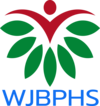Comparison of growth performance of live feed microalgae and rotifer (Brachionus sp.) under different feeding medium in outdoor culture condition
1 Bangladesh Fisheries Research Institute, Shrimp Research Station, Bagerhat-9300, Bangladesh.
2 Bangladesh Fisheries Research Institute, Brackishwater Station, Paikgacha, Khulna-9280, Bangladesh.
Research Article
World Journal of Biology Pharmacy and Health Sciences, 2021, 05(02), 025-032.
Article DOI: 10.30574/wjbphs.2021.5.2.0008
Publication history:
Received on 03 January 2021; revised on 09 February 2021; accepted on 11 February 2021
Abstract:
Live feed is the basic food source and nutrient security for successful seed production of any commercially important aquaculture species of fishes, mollusks and crustaceans. Both plant and animal originated aquatic microscopic organisms are generally termed as live food. They are the basic food items in early stages (larval stage) of life cycle due to small sizes, easy digestibility and enriched in nutrients. The Nannochloropsis sp.; Nannochlorum sp. and Tetraselmis sp. are rich with relatively high content of essential fatty acids in comparison to other marine algae. Likelihood, the rotifer Brachionus sp. is ideal feed item for brackishwater finfish and mud crab larvae rearing due to its special features like rapid reproduction, slow movement, suitable size and easy digestion by the newly hatched larvae. The present study is the report on comparison of growth performance of live feed (microalgae and rotifer) in outdoor culture condition. The study was conducted at the hatchery complex of Bangladesh Fisheries Research Institute, Brackishwater Station, Paikgacha, Khulna. In outdoor culture condition the growth pattern obtained for three microalgae were Tetraselmis sp.> Nannochlorum sp.> Nannochloropsis sp. Highest average growth 6.87×106±1.97×106, 6.91×106±1.69×106 and 6.23×106±1.53×106 was observed for Nannochloropsis sp., Nannochlorum sp. and Tetraselmis sp. respectively in trial 3. Average growth of rotifer (Brachionus sp.) found highest 189±18.10 ind./ml at combined media of yeast and microalgae and lowest growth 119.67±17.60 ind./ml noticed with baker's yeast media. Nannochloropsis sp. contains more energy among all microalgae but Tetraselmis sp. carry highest level of protein. The highest level of protein 56.3±0.18% found in rotifer enriched with microalgae+fish oil and lowest protein content noticed with microalgae enrichment media. So, research finding suggests that, treatment T3 would be the best recommendations for rotifer culture.
Keywords:
Microalgae; Rotifer; Growth performance; Plastic jars; Bangladesh
Full text article in PDF:
Copyright information:
Copyright © 2021 Author(s) retain the copyright of this article. This article is published under the terms of the Creative Commons Attribution Liscense 4.0
